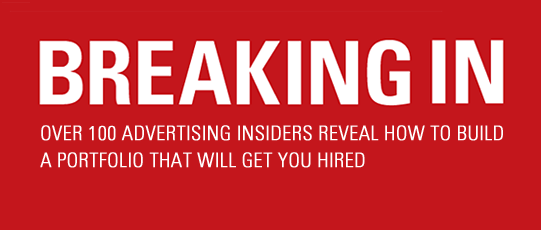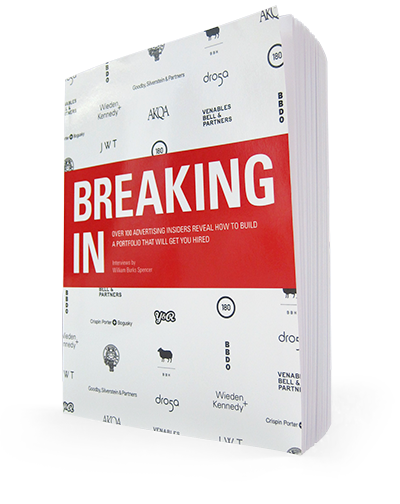In case you missed it, check out some great work from Eitan Chitayat.
WS: What do you look for in a student book? And what impresses you?
EC: To say I look for something original wouldn’t be very original at all. What I like most is just people who aren’t afraid. A lot of books are cookie cutter. A lot of them are the same. I don’t think that means what they have isn’t good work. But I like to see stuff that’s different. Someone who took a risk. Not for shock value. It has to be good, obviously. Otherwise you end up looking bad.
I like writers who can art-direct and art directors who can write. That’s impressive and important. What you’ll sometimes get in real-world advertising is, ”Let’s come up with the idea and then I’ll take care of the art direction and you take care of the copy” or vice versa. I enjoy working with people who won’t draw a line. I’m a writer but I’m very passionate about design, too. And I love working with art directors who can sit down and say, “Let’s write it like this.” They’ll be just as involved with the writing as l will be in the art direction. And nowadays, with new media and, more than ever, lines should be blurred, or even not there at all in some cases.
WS: Are sketches enough or do things need to be comped up? And do you ever look at hard-copy books or just websites?
EC: I guess it would be correct to say, “Yes, sketches are fine.” But you know what? I think it’s kind of lazy if you don’t go the distance and try to impress. When I started out as an aspiring copywriter without a job, I could have just done sketches. I didn’t know how to use Photoshop and Quark—what we used back in the day—but I taught myself. It’s important to show it how you want it to look. And if you don’t know how to do it then teach yourself. Get a friend to help. Pay someone. Barter your services. That’s not only getting creative. That’s showing passion.
I’m a bit of a hybrid. I’ve always delivered in every medium, and I think it shows in how I present my work. Or, at least, how I started presenting it. I was one of the first creatives I know, in my circle at least, to have an online portfolio. Just because I wanted people to see what I’m doing no matter where they were. And since everyone I know lives all over the world, it was, and still is, the best way. Obviously, it’s better to have both a website and a hard-copy portfolio, or just something people can download and print out.
I prefer websites though. Take a banner ad, for example. It’s motion. And showing it in motion is better. In a book, showing a banner is like showing a TV spot in storyboard. It works, but not the way it ran. In this day and age, you have to have a website. They’re simple enough to create. And for the site, don’t get fancy. Just get to the work. And let it do the talking.
WS: What do you think about long copy? Is it important to have in a book?
EC: As a writer, you should know you’ll be faced with writing brochures, websites, email newsletters, and more. You might have to do little mini-booklets for that cool guerrilla idea or an insert for magazines. So, yes, absolutely. I think long body-copy is important to show. But only if it’s great. I wouldn’t include something just for the sake of having it in there. Writing long body-copy isn’t easy. But when you have it down, it’s a brilliant feeling. And when someone reading it reacts with, “Damn, this kid can write!” then so much the better.


Comments are closed.